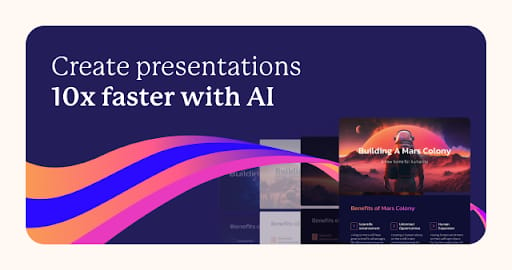
🎇 Disney’s $189B Entertainment Empire
When you hear someone say ‘Disney’, what do you think of?
A park filled with thousands of sweaty people, and lines longer than the DMV? Or maybe a rat named Remy guiding a French chef by the hair? Or do you think of that Disney cruise you took with your family 7 years ago?
Disney has evolved far beyond what Walt could have imagined when he started in 1923.
Today, Disney owns over 200 companies and is valued at $189B.
How did one man build one of the world’s biggest companies with nothing but a dream and lots of determination?
Well, maybe there’s a little more to it than that…
Here’s what we got for ya:
✍️ How to Make Your Dreams Come True
💵 Building a $189B Empire
🪄 Happily Ever After Marketing
Read time: 4 min 43 sec

✍️ How to Make Your Dreams Come True
For a long time, Walt Disney’s dream seemed unattainable.
“How do you expect to make a living as an artist?” His father would ask. At times, Walt wondered if his father was right.
Despite multiple job rejections, Walt never gave up. Drawing and storytelling were his passions.
Finally, Walt landed a job at Kansas City Film ad service, where he learned the magic of animations by drawing them by hand, unlike most artists at the time.
Impressed by Walt’s work, the ad company wanted him to produce hand-drawn films for clients– a dream come true!
After work, Walt made more films at home for fun.
It wasn’t until the local theater agreed to screen Walt’s homemade films that he realized his potential. He quit his job to focus on creating cartoon films based on fairy tales.
He joined another studio, and within a year, he produced 6 cartoons including, Cinderella, Little Red Riding Hood, and Puss in Boots.
However, the studio he worked for went bankrupt, leaving Walt homeless with only $40.
At 21, Walt moved to Hollywood to get a fresh start.
Universal Pictures hired him to create a series about a rabbit.
Look familiar?
Oswald the Lucky Rabbit was Universal’s first major hit.
As Oswald kept earning more money for Universal, Walt wanted a pay raise too. Instead, Universal offered Walt less pay and threatened to take his employees.
Walt left, determined that he would own every future character he created.
In 1928, Walt introduced the world to Mickey Mouse, debuting in the hit film Steamboat Willie, the first animated cartoon with sound. It was a hit, with raving reviews from both the New York Times and Variety.
Walt’s success continued with Snow White, the first feature film with color and sound. It was the highest-grossing film of its time, making over $8M in its first year.
From there, things kept getting better.

An entirely new way to present ideas
Gamma’s AI creates beautiful presentations, websites, and more. No design or coding skills required. Try it free today.

💵 Building a $189B Empire
Walt has his next brilliant idea at the Griffith Park merry-go-round. Looking around, he noticed all the parents and operators were bored and that the ground was dirty.
It was not a magical place at all.
So Walt set out to build the most magical place on earth.
In 1954, just one year after opening, Disneyland had 3M visitors. Today, there are 12 different theme parks worldwide. Magic Kingdom alone brings in 20M visitors a year.
Last year, Disney’s theme parks generated 70% of the company’s income.
But Disney didn’t stop there.
Diversifying within the entertainment industry, Disney has enhanced its brand image and profitability.
The Walt Disney Company is now valued at $189B, making it the world’s 2nd biggest entertainment company by revenue.
Over the years, they’ve acquired ABC, ESPN, 21st Century Fox, Marvel, Pixar, and other leading entertainment companies.
They released Disney+ in 2019, which already ranks as the 3rd most popular streaming service worldwide.
Now, Disney ventures into a new domain.
In 2026, Disney’s first Storyliving Community, Cotina, will open.
What is Storyliving, you may ask? It’s a residential community for Disney superfans who never want to leave the Disney world.
But how did Disney build a brand that makes people want to live, breathe, and die within it? It all comes down to their marketing…

🪄 Happily Ever After Marketing
Disney’s marketing strategy is pure genius.
Rather than starting with a product and figuring out how to sell it, Disney works backward. They create movies that beg products to be made.
What little girl wouldn’t want a doll of her favorite princess Elsa? And maybe a Rapunzel hair brush too. And definitely Cinderella slippers.
What does this mean for your brand? Well, not every company needs to produce movies to sell their products— I don’t need to see a dozen films about Miralax…
However, every brand does need a story.
Take Nike, for example. They aren’t selling shoes, they’re selling athletic determination and drive.
Now, let’s test your story. Ask yourself, if your brand story was a movie, would you go see it?
This Nike ad does a good job of putting the story first.
By using storytelling, your brand is associated with a feeling instead of a product.
For me, hearing the Disney theme song brings me back to my childhood living room and my family. It brings a sense of comfort.
Now, everything associated with the Disney brand has the same magic effect.
This emotional connection is why families return to Disney year after year, creating new Disney-themed T-shirts.
Seriously, this is a thing.
The Disney brand is so enchanting that there were nearly 19K proposals in Disney parks last year alone.
People buy Disney products and immerse themselves in the Disney world to recapture the magical feeling created by Disney’s storytelling.
More on this:
- How to write a great brand story



